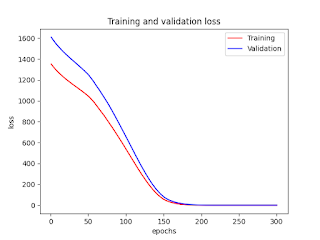MSCI INTEGRATED FACTOR CROWDING MODEL
Assessing Crowding Risks in Equity Factor Strategies
https://www.msci.com/documents
- The increasing awareness of factors and growing popularity of factor investing have heightened the potential for crowding in factor strategies. Occasional but significant drawdown events in factor performance have highlighted the need for and potential value of a robust model of factor crowding that can alert investors to growing crowdedness in factor strategies.
- The metrics we use are based on an intuitive model of the implications when too much capital chases the same strategies. The metrics are based on holdings, pricing and return-based information, and include valuation spreads, short interest spreads, pairwise correlations, relative volatility and factor momentum. Our research indicates that each metric has implications for future factor volatility and performance. We also find that factors that appear crowded on our model had a much higher frequency (over seven times higher) of significant drawdowns in factor performance over the subsequent 12 months than factors that did not appear crowded.
INTRODUCTION
- While both capacity and crowding are concerned with the implications of how much capital is following a given strategy, we distinguish capacity from crowding in that capacity is more concerned with the impact of the level of allocated capital on the overall long-term expected risk and return of a strategy (Alighanbari and Doole, 2018) whereas crowding is more concerned with crisis dynamics and a strategy’s behavior in tail events.
- While holdings data have the intuitive appeal of providing more direct measures of investment in a security or strategy, a drawback is that these data are often updated infrequently and have a significant lag in availability. For example, 13 F filings are reported only quarterly, and the reporting deadline is 45 days after quarter-end. Other public holdings data, such as for short interest, are available at a higher frequency and with less delay.
- Although pricing and return-based crowding metrics are more indirect measures, they can be updated more frequently and with no lag between measurement and reporting.
- However, some metrics, such as return correlations, require history to calculate. Intuitively, one might expect that as a strategy becomes more crowded the stocks tied to that strategy will increase their tendency to move together (correlation), and that their movements may become more volatile.
- MSCI FACTOR CROWDING METRICS
The MSCI Integrated Factor Crowding Model brings together five measures of factor crowding, incorporating both holdings-based and return- and pricing-based metrics. The five metrics are each standardized in a time-series framework and then combined in a weighted average to create the final integrated score. - The five metrics are:
- Valuation spread
- Valuation of top vs. bottom quintile stocks of a factor, combining B/P, Sales/P, and forecasted E/P
- Short Interest spread
- Difference in short interest utilization ratio of bottom vs. top quintile stocks of a factor
- Pairwise correlation
- Average return correlation of stocks in top and bottom quintiles of factor to corresponding quintile average portfolio
- Factor volatility
- MSCI Barra model forecast factor volatility relative to forecast market volatility
- Factor reversal
- Cumulative trailing factor return over last 36 months
CONCLUSION
- The MSCI Integrated Factor Crowding Model is designed to complement the Barra model by providing investors with insight into how the rest of the market is positioned with respect to factors. The model infers the relative degree of crowdedness in factor strategies by examining a robust set of metrics incorporating holdings, pricing and return-based information, which are sensitive to large amounts of capital following the same strategies. The model can be used to quickly identify where crowding risks may be building and to help investors assess whether adjustments to their own exposures are warranted.
- We have examined the relationships of each of the metrics and the integrated score with subsequent factor performance, volatility and drawdowns. While not indicative of future events, we found that high levels of crowding in a factor have historically implied greater risk of poor performance and higher volatility for that factor thereafter, particularly over the subsequent six to 12 months. For the momentum factor, nearly all of the metrics indicated high levels of crowding at a number of interesting points in financial history – during the technology bubble of the late 1990s, leading up to and during the financial crisis in 2008 and at the end of 2015 prior to the momentum drawdown of the first quarter of 2016.
- While it is not possible to be certain about how or when the next crisis or extreme event will occur, it is likely that another one eventually will. Some observers have argued that crowding has contributed to a number of extreme market events. Investors may want to be aware of those occasions when crowdedness (or uncrowdedness) in a factor has become extreme. Our crowding model can provide indications of these events.


No comments:
Post a Comment